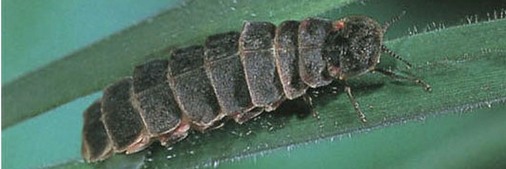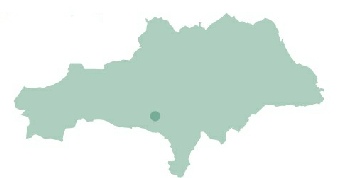

Biodiversity
Action
Plan
Glowworms. Actually a beetle, only the female glows strongly, climbing up tall grasses and ‘lighting up’ to attract the flying males.
The females glow for several hours a day as soon as it gets dark but their glow stops once they have mated. They then return to the ground to lay their eggs.
The male Glowworm (10-12mm long) looks like an ordinary beetle with hard wing cases, however the flightless larger female (15-20mm long) has flattened body sections without wings. The larva looks like the wingless female; only producing an easily overlooked, weak, intermittent light.
The bright greenish-yellow glow is produced by the female from the underside of the last two sections of its body. This glow, used to attract a mate, is caused by a chemical reaction within the beetle. The reaction is extremely efficient – wasting only 2% of its energy as heat. As a consequence, a brilliantly glowing female stays cool.
Adult Glowworms are active between June and August in a short summer breeding period, during which they do not feed and after which they die. The eggs hatch into larvae after a few weeks, and they remain as larvae for one or two further summers, feeding on small snail species.
Glowworms have been known on the Thurgoland site from its time as a railway track. Following the first local biodiversity action plan in 2002, Doug Brown has counted glowing female Glowworms on a transect of the site, twice a week, during the breeding season.
Although a count of c150 “glowing” females was recorded some years ago, the average daily maximum number for the ten years from 2009 to 2019 is 64.3 with a count of 55 in September 2020. Normally over the years the numbers have peaked around the summer solstice, gradually declining to finish about early July, an average of 26.5 days. However in 2019 and 2020 the period in which glowworms were recorded increased to 132 and 145 days.
Use the links below for further information
Local Priority Species
Glowworms are found on only one site in Barnsley.
Glowworms are recorded each year on the site, twice a week during the ‘glowing’ season.
This site has been made a Local Wildlife Site, because Glowworms are scarce and the site supports an important local population.
Glowworms are a Local Priority Species because the Glowworm population is of local interest and significance,.
There is some evidence
suggesting a decline in Glowworm populations in the country as well as on the local site.

Glowworm

In Barnsley, Glowworms may be spotted glowing at night in the summer months on the Trans Pennine Trail near Thurgoland.
Thanks to Doug and everyone who took part in the counts, assisted with management, and compiled the annual reports